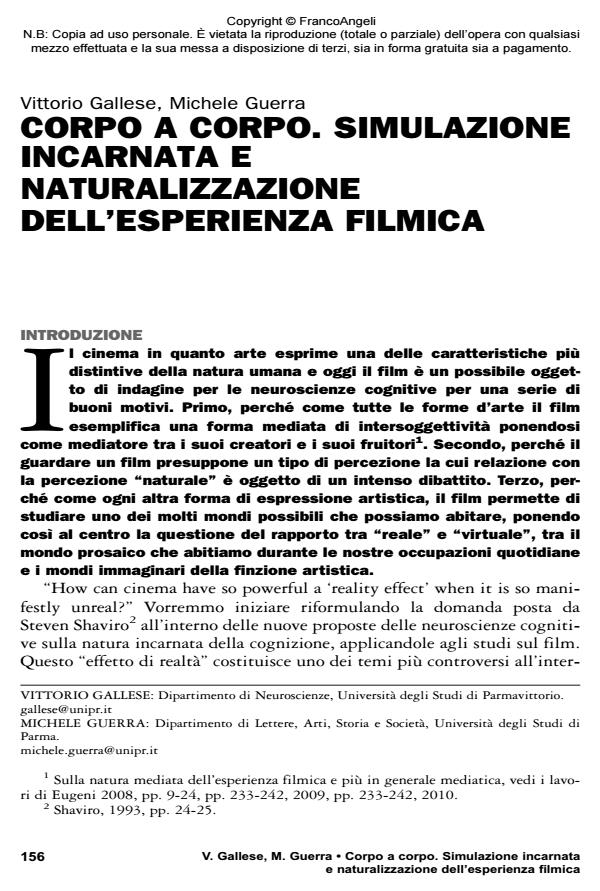Embodying movies. embodied simulation and film studies
Journal title PSICOBIETTIVO
Author/s Vittorio Gallese, Michele Guerra
Publishing Year 2014 Issue 2014/1
Language Italian Pages 22 P. 156-177 File size 1173 KB
DOI 10.3280/PSOB2014-001012
DOI is like a bar code for intellectual property: to have more infomation
click here
Below, you can see the article first page
If you want to buy this article in PDF format, you can do it, following the instructions to buy download credits

FrancoAngeli is member of Publishers International Linking Association, Inc (PILA), a not-for-profit association which run the CrossRef service enabling links to and from online scholarly content.
Recent discoveries in neuroscience, among which that of mirror neurons (MNs), have strongly influenced the debate on spatial cognition, action, emotion an empathy, all aspects that in recent years have been deeply reconsidered within fil studies. This article focuses on the role embodied simulation (ES) theory - triggered by the discovery of MNs - plays in film experience. ES has been proposed to constitute a basic functional mechanism of humans’ brain. Because of a shared bodily representational format, we map the actions of others onto our own motor representations, as well as others’ emotions and sensations onto our own viscero-motor and sensory-motor representations. We wonder how relevant this mechanism is in our film experience reconsidering both classical and recent theories that to some extent have foreshadowed ES, and testing our hypotheses through the stylistic analysis of two sequences from Hitchcock’s Notorious and Antonioni’s Il grido.
Keywords: Embodied Simulation; Mirror Neurons; Film Style; Hitchcock; Antonioni.
- The Palgrave Handbook of the Philosophy of Film and Motion Pictures Daniel Jerónimo Tobón, pp.865 (ISBN:978-3-030-19600-4)
Vittorio Gallese, Michele Guerra, Corpo a corpo. Simulazione incarnata e naturalizzazione dell’esperienza filmica in "PSICOBIETTIVO" 1/2014, pp 156-177, DOI: 10.3280/PSOB2014-001012